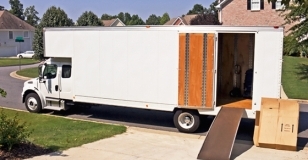
When that time for relocation comes you know you have to start planning hard. And sometimes there are more difficulties than you have expected. Even after you have made the moving checklist and have collected packing boxes and bubble wrap, and have even wrapped and packed everything, then you turn around and remember that you have a pet. Suddenly, the move becomes much harder and you have to be more careful with that you do. How do you fit the pet into the move? How will the change affect it?

Some people take their pets for granted when moving house, but just as relocation can be stressful for you, the same can be said for the pet as it suddenly is surrounded by piles of boxes containing things that were usually ordered around the house – and it should know as it chewed not one or two of them. Taking away its favourite toys to pack them in a box will take away its entertainment, and once you get to the food bowl and the irregular feeding schedule because you are too busy, all the effects that the move is having on you will be duplicated onto the pet. They do tend to get restless when changes are occurring and that is why pet should not be treated any differently than other times just because you are busy with packing and loading and planning. You need to make it so that the only change the pet has to go through is the change of scenery once the removal van finally drops you off at your new address.
• If moving by car, the move is fairly simple. Just treat your pet as your kid and pack all its
things last so that you do not take anything away from it.
• And after reaching the new location, unload its things first so that it can immediately start
adapting to the new environment. 
• Take it with you in your car or the car you will be travelling in so that it feels the warmth of
familiarity, and whatever you do, do not lock it in the moving van just because there is no
room in the car. Make room. You will make the mistake of locking a restless animal with the
boxes of all your belongings only once. And if you lock it inside a cage or a box, there will
be a certain amount of alienation. 
• If you are entrusting the moving company with your belongings and you will get to the
new place by plane, then you need some more planning to do. Your need to consult a
veterinarian about your pet and the move, and if you think that it cannot handle a flight,
you should ask for sedatives to keep the pet calm and mostly asleep during the trip.
• You will need to take a quick course in injecting sedatives, but a loyal pet deserves a few
minutes of your time, so learn how to do it properly. 
• You should also ask the vet if he or she can recommend you a new doctor for the
pet at your new location.
• You can keep the pet sedated and leave it in the baggage compartment of the plane,
or you can take it with you in the passenger seat, but you should know that there will
always be people who will disagree with that and you will be getting plenty of glares.
Ignore them, the pet deserves better.
With the right planning, your pet will barely notice the changes in went through because all its attention will be turned to you, and you will be able to continue adjusting to your new life without being concerned about your pet being disturbed or restless.











